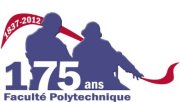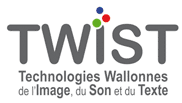Keynotes
|
|
David Geerts David Geerts has a PhD in Social Sciences at the KU Leuven, where he is Research Manager of the Centre for User Experience Research (CUO | Social Spaces, iMinds). David is specialized in user-centered design and evaluation of future ICT applications, mainly in the domain of social interactive television. He organized several workshops, special interest groups, and tutorials at international conferences, and for several years has taught a course on Human-Computer Interaction for master students of the faculties of Social Sciences and Economy. David Geerts is member of the IFIP TC14 on Entertainment Computing, is co-founder of the Belgian ACM SIGCHI.be chapter (now CHI Belgium), is part of the EuroITV steering committee and was program chair of the EuroITV2009 conference on interactive television. |
From second screen to multi-screen and beyond
The introduction of the tablet computer breathed new life into interactive television, and the concept of a "second screen" as a companion to television has in a short time become very popular. However, the viewers' main focus stays the television program itself, and the second screen can distract them from following the show they are watching. On the other hand, many viewers search for distraction themselves while watching TV and are at the same time chatting, mailing, playing games, working, or doing many other things on the many screens they have available. In this talk, David Geerts will look at the multi-screen living room environment from a social perspective and discuss the role of program genres, distraction, multiple devices and social interaction. He will present a number of ways how viewers can be more actively engaged with television shows in the future, by using ambient, haptic or other sensory channels in addition to multiple screens.
|
|
Gilles Pinault Chief Creative Officer and Co-founder, Softkinetics S.A. In 2003 Gilles brought his first prototype of 3D gesture recognition based interface to a collaboration that led to today's SoftKinetic. By marrying creativity and sciences, Gilles drives technology to innovative ways. Through his education in architecture in Brussels (Victor Horta Institute of Architecture – Brussels, Belgium ) and Virtual Reality in Laval (Master Degree InnoVR – ISTIA – Angers, France), he developed new methods that link people to virtual spaces. That passion drove him to develop new interface methodologies that are the foundation of SoftKinetic. |
The future of camera interaction from a user experience standpoint
3D camera interaction is often described as the evolution of the mouse and touchscreen or as the next step in natural interaction. This vision simplifies the reality which is more subtle and implies several design challenges. It particularly questions the central role of the screen in most interactions. Based on more than ten years exploring the deep nature of camera interaction, Gilles will share his views on how he would like the future to look like and what is missing to get there. He will also highlight the complementary technologies that he believes will change our relationship with computers.
|
|
Indy Saha Director of Strategy Google Creative Labs, he is responsible for shaping the creative direction of Google’s products and services, such as Chrome, Maps and its search product. Google’s new-model marketing team, Google Creative Lab, is responsible for marketing everything from the company’s Android mobile operating system to its search offering. |
Enter Web Lab
Enter Web Lab, a series of interactive Chrome Experiments made by Google that bring the extraordinary workings of the web to life. A first-of-its-kind web-based exhibition live from the Science Museum in London and open to the world online at chromeweblab.com
Worldwide visitors both online and in-museum are able to make music with people across the world; trace routes across the internet's vast network and discover where images are stored; watch their portrait being processed and drawn by a robot; and travel instantly to far away places.
See the magic of the web come to life at chromeweblab.com














































